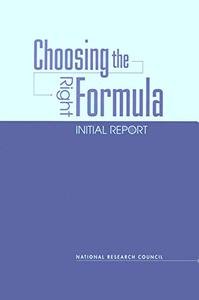
Panel on Formula Allocations, Committee on National Statistics, National Research Council, "Choosing the Right Formula"
English | 2001 | ISBN: 0309075807 | PDF | pages: 102 | 0.6 mb
The workshop was a direct outgrowth of a previous study by the CNSTAT Panel on Estimates of Poverty for Small Geographic Areas. That panel, established under a 1994 act of Congress, began its work with a very specific mission: to evaluate the suitability of the U.S. Census Bureau's small-area estimates of poor school-age children for use in the allocation of funds to counties and school districts under Title I of the Elementary and Secondary Education Act. In carrying out their assignment, panel members came to realize that the properties of data sources and statistical procedures used to produce formula estimates, interacting with formula features such as thresholds and hold-harmless provisions, can produce consequences that may not have been anticipated or intended. It also became evident that there is a trade-off between the goals of providing a reasonable amount of stability in funding from one year to the next and redirecting funds to different jurisdictions as true needs change. In one instance, for example, the annual appropriation included a 100 percent hold-harmless provision, ensuring that no recipient would receive less than the year before. However, there was no increase in the total appropriation, with the result that new estimates showing changes in the distribution of program needs across areas had no effect on the allocations. Choosing the Right Formula provides an account of the presentations and discussions at the workshop. The first three chapters cover the overview, case studies, and methodological sessions, respectively. Chapter 4 summarizes the issues discussed in the roundtable and concluding sessions, with emphasis on the identification of questions that might be addressed in a panel study.
Links are Interchangeable - No Password - Single Extraction



